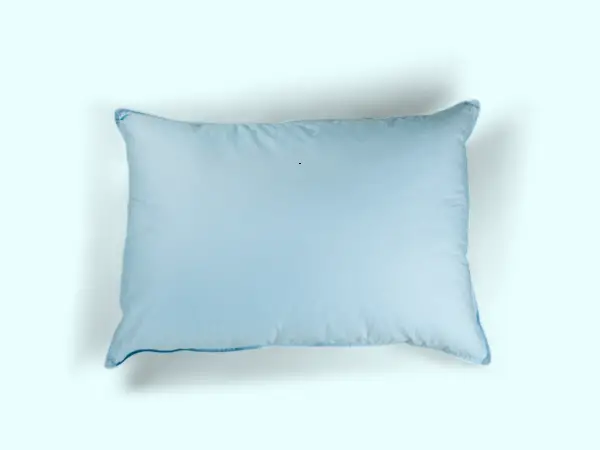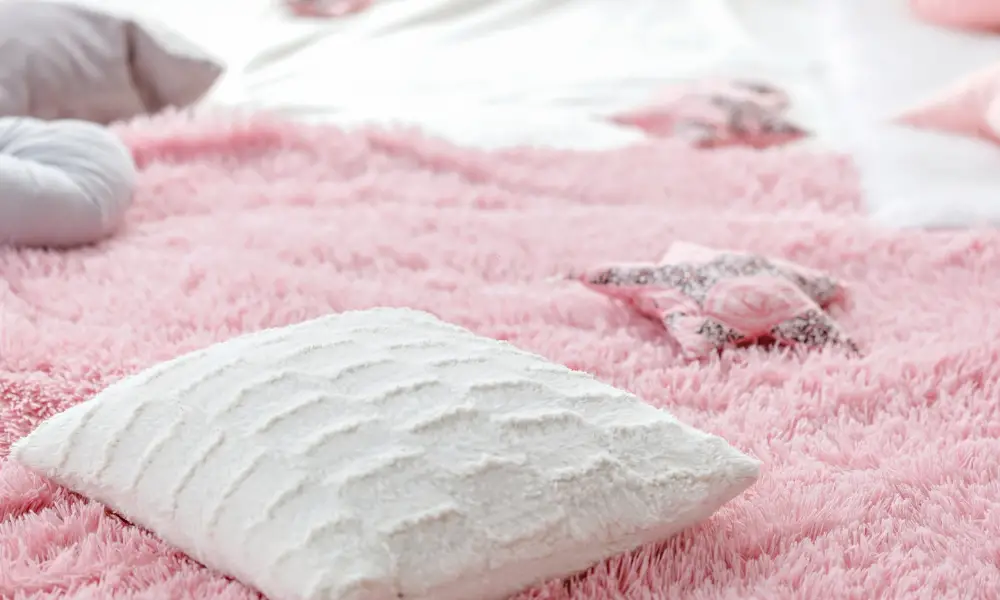Many people overlook this important feature. A good pillow core supports your head and neck properly. It helps align your spine, reducing pain and discomfort.
Different materials, like memory foam or latex, create various pillow cores. Each type offers unique benefits.
What Is A Pillow Core?
A pillow core is an important part of a pillow. It provides support and comfort while you sleep. Understanding pillow cores can help you choose the right pillow. This choice can improve your sleep quality. Let’s explore what a pillow core is and how it affects your sleep.
A pillow core is the central part of a pillow. It gives the pillow its shape and support. The materials used in the core affect how the pillow feels. Different types of pillow cores suit different sleep styles.
- Memory Foam: Molds to your head and neck.
- Latex: Offers firm support and durability.
- Down: Soft and fluffy, great for comfort.
- Synthetic Fibers: Affordable and easy to maintain.
A good pillow core can greatly improve your sleep. Here are some benefits:
- Provides better neck and head support.
- Reduces pressure points.
- Helps maintain proper spine alignment.
- Improves overall sleep quality.
Choosing the right pillow core depends on your sleep style:
| Sleep Position | Recommended Pillow Core |
|---|---|
| Back Sleepers | Medium-firm memory foam or latex |
| Side Sleepers | Firm pillows with a thicker core |
| Stomach Sleepers | Soft and thin pillows |
Understanding pillow cores helps you make better choices. A good pillow core leads to better sleep support. This can lead to a healthier, happier you.
Types Of Pillow Cores
Pillow cores play a crucial role in sleep comfort and support. Choosing the right pillow core can help improve sleep quality. Different types of pillow cores offer various benefits. Understanding these types can guide you to better sleep support.
Memory Foam
Memory foam pillows are popular for their unique properties. They contour to the shape of your head and neck. This feature helps align the spine properly. Here are some key characteristics:
- Pressure Relief: Distributes weight evenly.
- Support: Offers excellent neck and head support.
- Temperature Sensitivity: Adapts to body heat.
- Durability: Lasts longer than many other materials.
Memory foam pillows often come in different densities. A higher density typically means more support but can feel firmer. Consider the following table to compare types:
| Density | Support Level | Feel |
|---|---|---|
| Low Density | Soft | Less Support |
| Medium Density | Medium | Balanced |
| High Density | Firm | More Support |
Memory foam pillows are ideal for side and back sleepers. They help maintain proper alignment throughout the night.
Latex
Latex pillows are made from natural or synthetic rubber. They offer a unique bounce and support. Here are some reasons to choose latex:
- Breathability: Keeps you cool while you sleep.
- Natural Material: Often hypoallergenic and resistant to dust mites.
- Support: Provides consistent support throughout the night.
- Durability: Long-lasting and maintains shape well.
Latex pillows come in various firmness levels. They can be soft, medium, or firm based on your preference. Consider the following benefits:
- Great for all sleep positions.
- Good for those with allergies.
- Offers excellent spinal alignment.
Latex pillows can be a great option for those who want comfort without sacrificing support.
Feather And Down
Feather and down pillows are filled with the soft feathers of ducks or geese. They provide a luxurious feel and are adjustable. Here are some features:
- Softness: Offers a plush and cozy feel.
- Adjustable: Easily shaped to your comfort.
- Lightweight: Easy to move and fluff.
- Breathable: Helps regulate temperature.
These pillows often require regular fluffing to maintain shape. They can compress over time but are still comfortable. Consider these pros and cons:
| Pros | Cons |
|---|---|
| Soft and comfortable | Can lose shape |
| Good for stomach sleepers | May cause allergies |
Feather and down pillows are perfect for those who enjoy a soft pillow. They provide comfort but may not offer the same support as other types.
Polyester Fiber
Polyester fiber pillows are made from synthetic materials. They are often budget-friendly and lightweight. Here are some benefits:
- Affordability: Usually cheaper than other pillow types.
- Variety: Comes in various shapes and sizes.
- Low Maintenance: Easy to wash and care for.
- Hypoallergenic: Good for allergy sufferers.
These pillows come in soft and firm options. They can easily fit various sleep positions. Consider the following:
- Great for budget-conscious shoppers.
- Good for casual use, like travel or guest beds.
- Less durable than memory foam or latex.
Polyester fiber pillows can be a practical choice. They offer decent support and comfort without a high price tag.

Benefits Of A Good Pillow Core
Understanding the benefits of a good pillow core can help you choose the right one for better sleep. A well-designed pillow core can enhance your sleeping experience by addressing key areas of support.
Neck Support
Proper neck support is crucial for a good night’s sleep. A good pillow core provides the right height and firmness for your neck. This support helps prevent neck pain and discomfort. A pillow that is too high or too low can strain your neck muscles.
Consider these points for effective neck support:
- Choose a pillow that contours to your neck.
- The pillow should fill the gap between your neck and mattress.
- Look for materials that maintain shape while sleeping.
| Material | Neck Support Level |
|---|---|
| Memory Foam | High |
| Latex | Medium |
| Feather | Variable |
Choosing the right pillow core can lead to better neck support. This support helps you wake up refreshed, without stiffness or pain.
Spinal Alignment
Spinal alignment is vital for overall health. A good pillow core helps keep your spine in a neutral position. This reduces strain on your back. Misalignment can lead to discomfort during sleep.
Here are important factors for spinal alignment:
- Ensure your pillow supports your head and neck.
- Consider your sleeping position: back, side, or stomach.
- Adjust pillow height to match your shoulder width.
For side sleepers, a thicker pillow is often better. Back sleepers may prefer a medium loft. Stomach sleepers usually need a thinner pillow.
Maintaining proper spinal alignment can improve sleep quality. It can also reduce aches and pains. Your pillow core plays a key role in achieving this.
Pressure Relief
Pressure relief is a significant benefit of a good pillow core. It helps distribute weight evenly. This reduces pressure on sensitive areas like the head, neck, and shoulders. Without pressure relief, you may wake up feeling sore.
Consider these aspects for effective pressure relief:
- Look for pillows with adaptive materials like memory foam.
- Choose a pillow that conforms to your shape.
- Ensure it offers support without being too firm.
A pillow core that relieves pressure can lead to deeper, more restful sleep. It allows for better blood circulation. This can reduce tossing and turning at night.
In summary, investing in a good pillow core is essential. It enhances neck support, spinal alignment, and pressure relief. These benefits contribute to a better sleep experience.
Choosing The Right Pillow Core
A pillow core supports your head and neck. It helps align your spine and provides comfort. With many options available, understanding your needs is key. This guide will help you select the best pillow core for better sleep support.
Sleep Position
Your sleep position greatly affects the type of pillow core you need. Different positions require different levels of support. Here’s a quick overview:
- Back sleepers: Choose a medium-loft pillow. It keeps your neck aligned with your spine.
- Side sleepers: A thicker, firmer pillow is best. It fills the gap between your shoulder and head.
- Stomach sleepers: Opt for a thin, soft pillow. This prevents your neck from bending too much.
Consider this table for a quick guide:
| Sleep Position | Pillow Core Type | Loft Level |
|---|---|---|
| Back | Medium-firm | Medium |
| Side | Firm | High |
| Stomach | Soft | Low |
Choosing the right pillow core based on your sleep position ensures comfort and support. It can help reduce neck pain and improve sleep quality.
Personal Preferences
Your personal preferences play a big role in selecting a pillow core. Think about what feels best for you. Here are some factors to consider:
- Firmness: Some prefer a soft feel, while others like a firm pillow.
- Material: Pillow cores come in various materials. These include memory foam, latex, and down.
- Height: The height of the pillow can change comfort levels. Test different heights before choosing.
Try these tips to find your ideal pillow core:
- Visit a store and test different pillows.
- Consider your typical sleep position.
- Read reviews to learn about others’ experiences.
Your comfort is vital. Choose a pillow core that meets your needs and preferences. This will lead to better sleep quality.
Allergies And Sensitivities
Allergies and sensitivities can affect your pillow choice. Some materials may trigger reactions. Consider these options:
- Hypoallergenic materials: Look for pillows made from synthetic fibers or latex. These often resist allergens.
- Machine washable: Choose pillows that can be washed easily. This helps remove dust mites and allergens.
- Natural materials: If you prefer natural materials, consider organic cotton or bamboo. These are less likely to cause reactions.
Check this table for common materials and their allergy potential:
| Material | Hypoallergenic | Care Instructions |
|---|---|---|
| Memory Foam | Yes | Spot clean only |
| Latex | Yes | Washable cover |
| Down | No | Dry clean recommended |
Consider your allergies before making a choice. A suitable pillow core can improve your sleep quality and overall health.
Care And Maintenance
Understanding how to care for your pillow core can improve your sleep quality. Follow these guidelines to ensure your pillow core stays in good shape.
Cleaning Guidelines
Regular cleaning helps maintain your pillow core’s comfort and hygiene. The method you choose depends on the material of your pillow. Here are some general cleaning steps:
- Check the label for specific cleaning instructions.
- Remove the pillowcase and any protectors.
- Use a mild detergent for washing.
For different materials, here are some guidelines:
| Material | Washing Method | Drying Method |
|---|---|---|
| Memory Foam | Spot clean with mild soap and water. | Air dry completely. |
| Latex | Spot clean with a damp cloth. | Air dry completely. |
| Down/Feather | Machine wash on gentle cycle. | Tumble dry on low with dryer balls. |
Always make sure your pillow is fully dry before using it again. This prevents mold and bad smells. Regularly washing your pillowcase can also help keep your pillow core clean.
Longevity Tips
Taking steps to extend the life of your pillow core is smart. Here are some tips to keep your pillow in good condition:
- Use a protective cover. This helps keep dirt and oils away.
- Fluff your pillow regularly. This helps maintain its shape.
- Keep it away from direct sunlight. Sun can damage materials.
- Store it properly when not in use. Avoid folding or crushing.
Replace your pillow core every 1 to 3 years, depending on the material. Check for signs of wear, like lumps or loss of support. Taking care of your pillow core leads to better sleep. A well-maintained pillow provides the support you need for a restful night.



